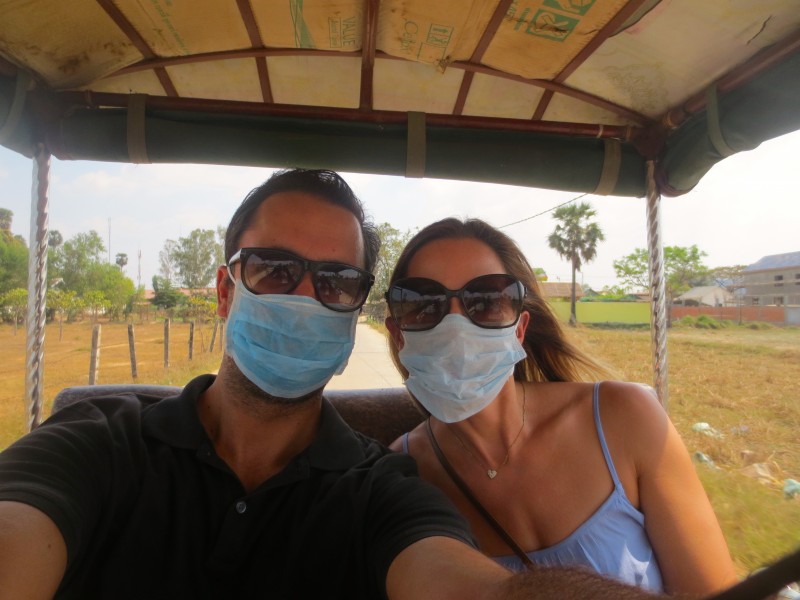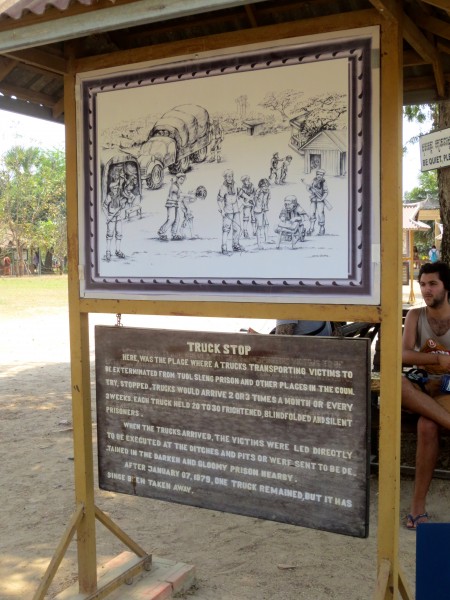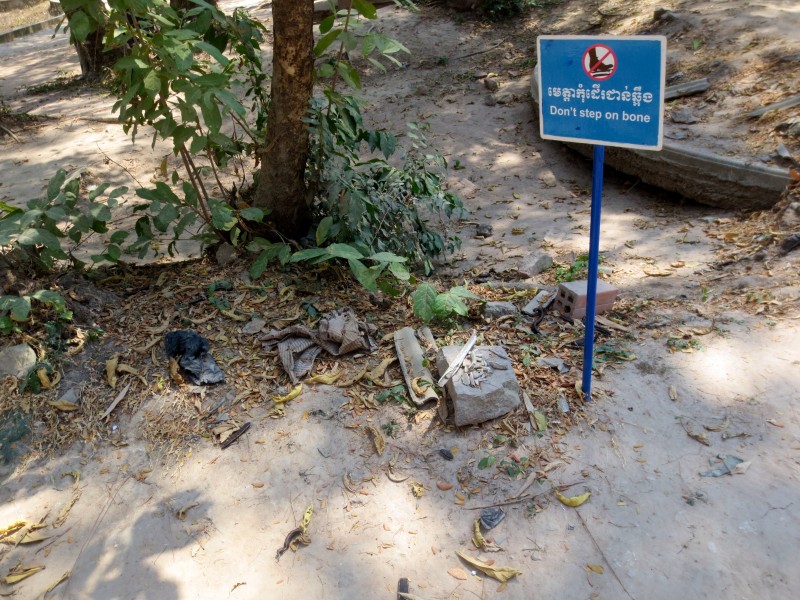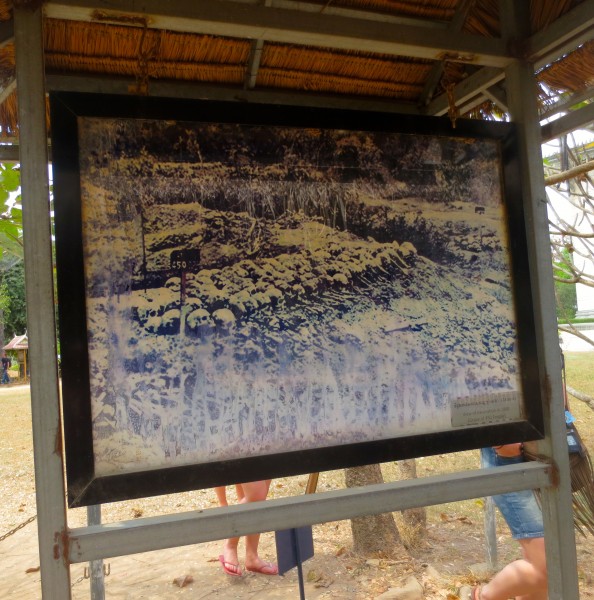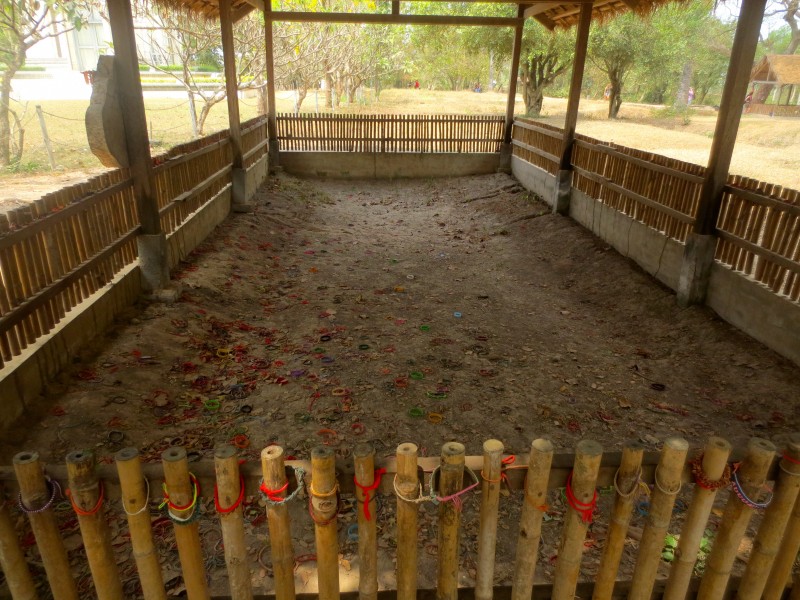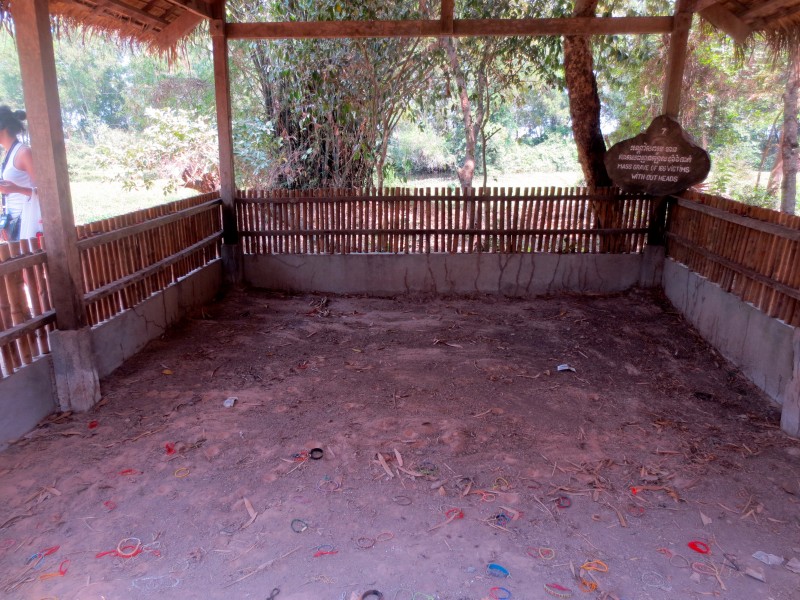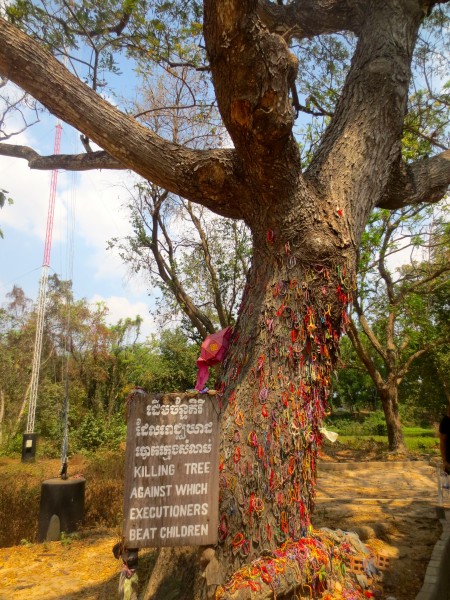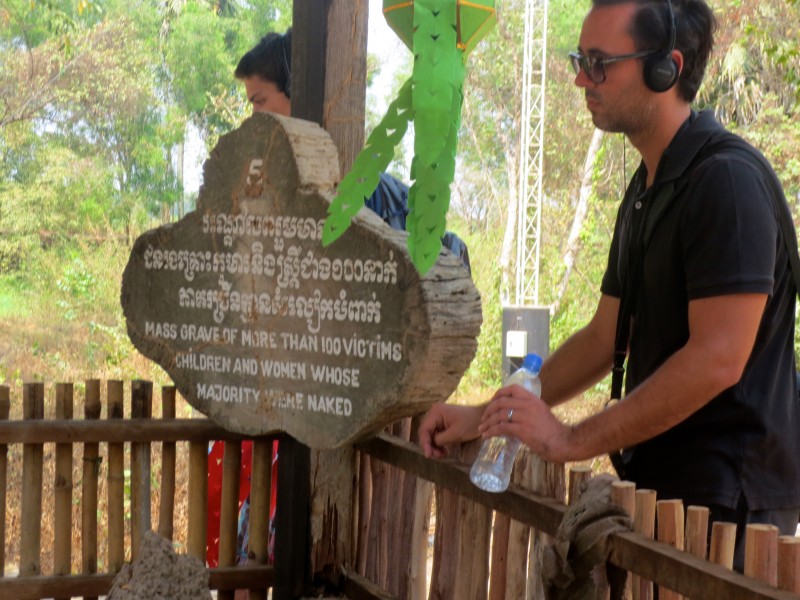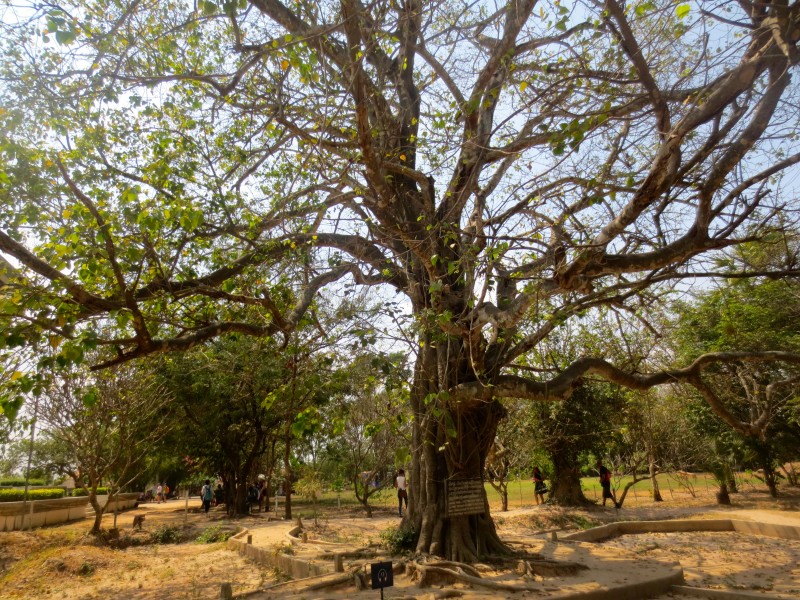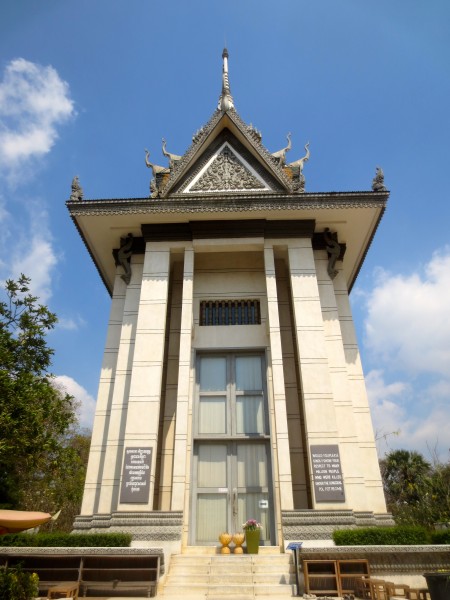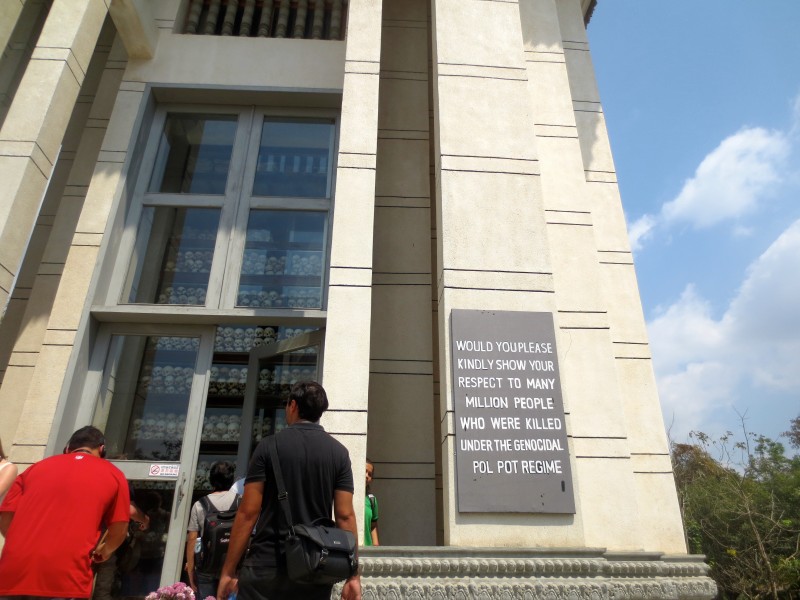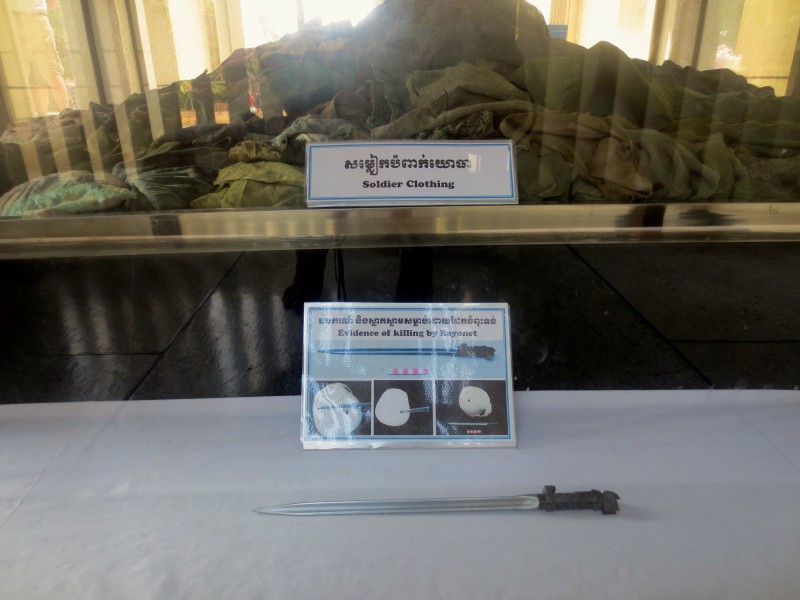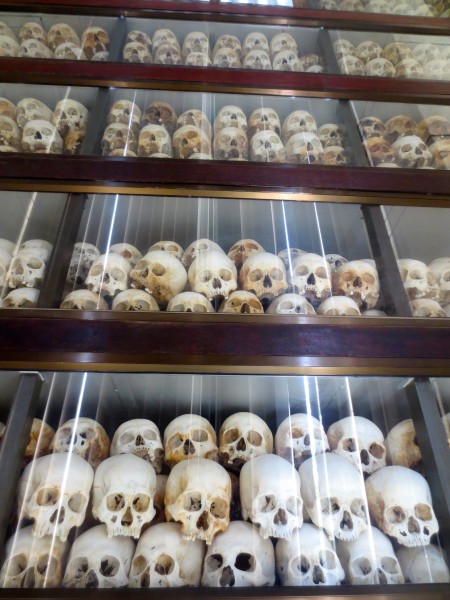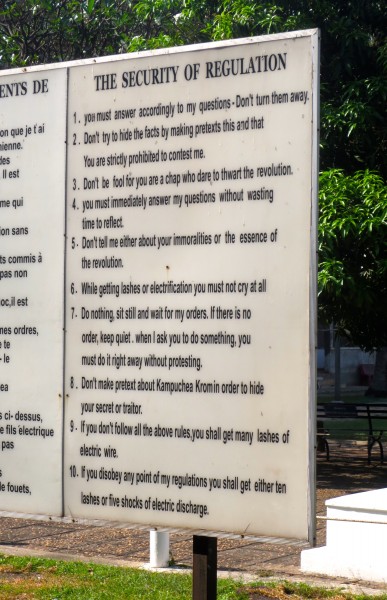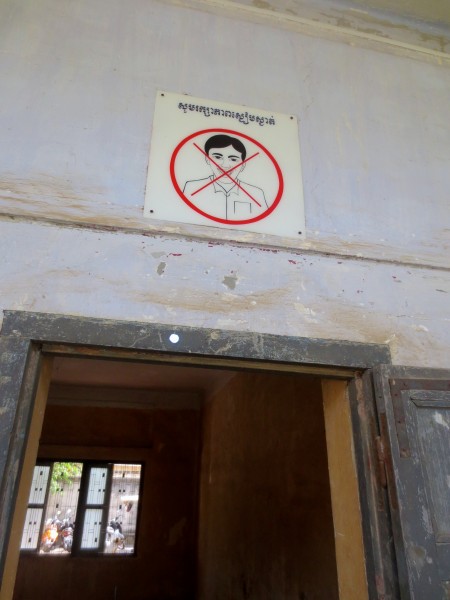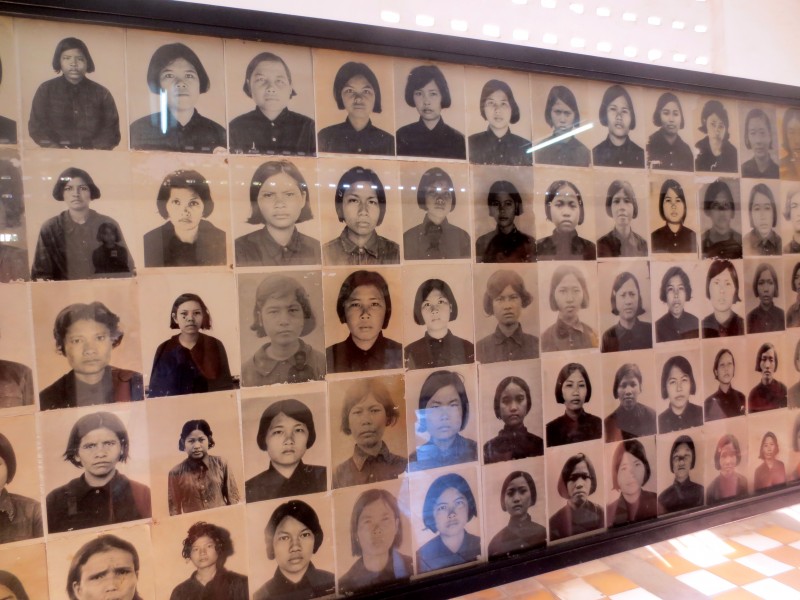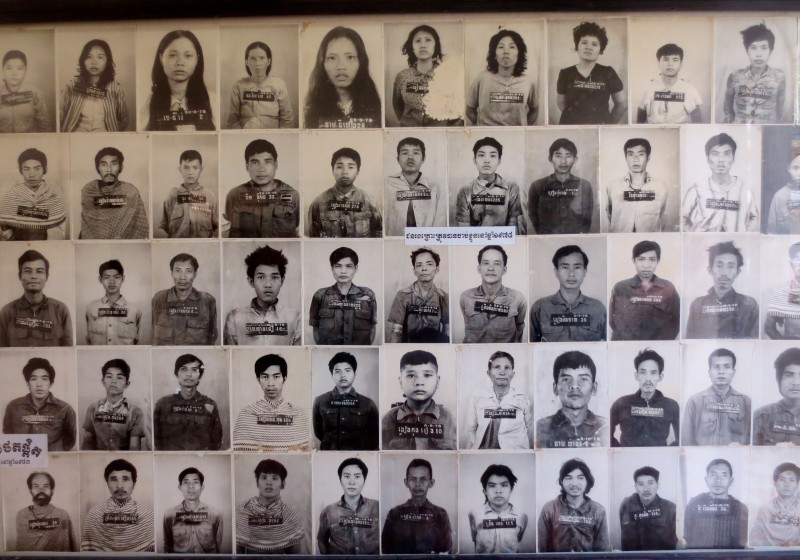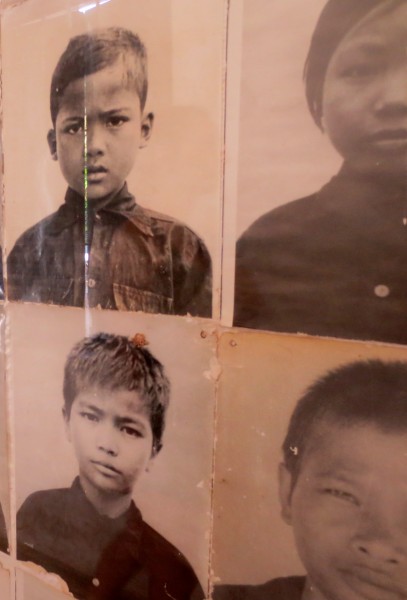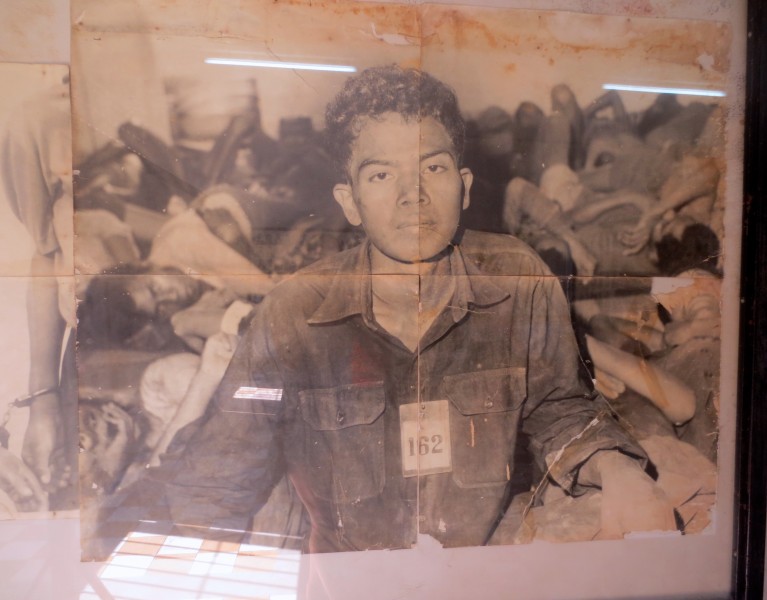Warning: This post contains some unsettling pictures and horrific history of Cambodia.
A few years ago while traveling solo my high school friend Aprille, posted an article on my FB wall and wrote “I read this and thought of you.” This article was about traveling young and all the benefits that come along with that. I’m paraphrasing, but the author discusses how a picture never does a place justice and to really experience it you need to see it. That these experiences will stay with you and define you and change you. He recommended a handful of things but one stuck out: “Get your heart broken by the killing fields of Cambodia.” I had never been to Cambodia and admittedly didn’t know much about the killing fields, but there was something in that sentence that compelled me to go.
I was now getting that opportunity.
Peter and I left Siem Reap for Phnom Penh for the second half of our Cambodian travels. We checked in at La Rose Suites by the generously friendly, helpful staff; a uniform demeanor of the Cambodian people.
Once getting settled in we grabbed a tuk tuk and headed out for dinner at Brooklyn Pizza & Bistro. Pizza had become our go-to meal when we didn’t know what we were in the mood for and tired of the local cuisine. One thing you can always count on…pizza.
The next day Peter and I got a feel for Phnom Penh; the capitol city of Cambodia.
Instead of sightseeing we opted to have a slower paced day and sit at a coffee shop so Peter could work and I could blog. Phenon Phen has started to become a buzzed about city. A city with the potential to follow in the foot steps of a city like Bangkok. In the late 90′s Cambodia opened its doors to foreign investment and with that has come impressive growth and made the country a top travel destination. High-rises and luxury hotels are being built at a rapid pace. However, the heart of Cambodia is still very much alive; dirt roads, honking rickshaws, gritty, chaotic streets and profoundly pleasant people. Phenon Phen is in an in between stage; ready to explode with opportunities, but still very simple, underdeveloped, filled with character, and sadly poverty. It’s an an exciting place to be, because you can feel the energy and enthusiasm of change.
At the coffee shop we observed ex-pats conducting meetings and young locals connecting over coffee and pastries. The vibe of progression was palpable and intoxicating. Peter even said to me, “I could see us living here.”
After a full day on our computers we walked over to a top rated restaurant for dinner, Malis. We enjoyed great Cambodian food in a lovely courtyard setting. A perfect way to end a good day.
The next day was designated for touring the killing field and S21 prison.
The lively vibe of experiencing present day Cambodia quickly dissipated as we started our tour of past Cambodia; the genocide from 1975-1979.
We made our way to the killing field, Choeung Ek, first by way of tuk tuk driver. He provided us with medical masks due to the dusty, dirt roads once you get out of the city-center.
During the years 1975-1979 Cambodia was taken over by totalitarian dictator Pol Pot and his guerrilla army the Khmer Rouge. Pol Pot, a communist, used a combination of Maoism and Stalinism as his blue prints to “revolutionize” Cambodia which he and his brutal army carried out in sociopathic extremes.
His goal was to reset the country to “year zero” by resorting Cambodia to an agrarian society of peasant farmers . This attempt at revolution was done by execution, starvation, and torture. Any person in the way of this revolution was killed. And who do you think those in his way were?
Doctors, lawyers, politicians, intellects, professionals, people who wore glasses or spoke foreign languages. Anyone that seemed to be a free-thinker, successful, powerful or a potential dissenter was murdered. These people were considered enemies to the revolution.
If you weren’t killed you were taken out to the countryside and forced to live and work like a slave where many ultimately died of starvation, heat, exhaustion, or murder. If you were alive you lived in constant fear of being raped, murdered, and/or tortured. People were torn from their families and friends. This was done on purpose so no alliances could be made. No one trusted anyone. Everyone, including children, were forced to work up to 15 hours a day with typically little more than a bit of rice porridge to eat.
The Khmer Rouge ruled by the motto, “To keep you is no benefit, to destroy you is no loss.” In other words a complete and utter disregard for human life. It is estimated that anywhere from 1-3 million people were killed which was about a quarter of the population at that time.
On April 17th, 1975 the Khmer Rouge army, comprised of ignorant, brainwashed, violent young men, marched into Phenon Phen and wrecked havoc on Cambodia, forever leaving a dark stain on history.
The Killing Fields
The killing fields were the sites where people were taken to be executed and buried in mass graves. People weren’t worth the price of a bullet so most were bludgeoned to death by ax, hoe, shovel, hatchet, or any other sharp object. Then the bodies were thrown into a pit dug up in the ground.
Aided by an audio guide which narrates the atrocities that went on here, including first-person accounts of survivors, it doesn’t take long to step onto the killing field and start to have your “heart broken.”
The field we visited was 1 of 343 that have been discovered and it is estimated that 20,000 people were killed here. It’s an eery feeling to be walking around on ground knowing that thousands of people were atrociously buried beneath. When it rains, bone fragments, teeth, and rags emerge from the ground. As we walked around we did encounter some bone shavings.
There are areas where graves were discovered and are marked off to give an idea of size and location.
There was also a grave that had been dug up where each body had been beheaded.
Quite possibly the most harrowing part of the tour, might have been the killing tree. The killing tree was the weapon of choice to kill babies and children. The Khmer Rouge soldiers would take the babies by the ankles and bash their heads into the tree. This was done to avoid children growing up and seeking revenge. Then their bodies were thrown into a mass grave. It was at this point that an ache entered my heart.
A nearby grave was discovered with women (mothers of the children who had been beaten by the killing tree) who were found naked, most likely raped before execution.
The tree below was used to hold speakers that blared music and propaganda to drown out the screams of the executed so that nearby villages wouldn’t hear.
The last part of the tour is a stupa dedicated to the lost lives and filled with the skulls of the executed.
Peter and I left the killing fields with hearts heavy and our minds in a state of disbelief. How did humans inflict these gruesome, violent, atrocious, senseless, and mindless acts on other humans? This happened in my lifetime.
Up next we made our way to the high school turned torture chamber, S21 prison.
The prison is where people were held and tortured before being brought to the killing fields. Often times the torture would be aimed at getting information out of someone. For example, a doctor imprisoned would be tortured to give the names of all other doctors he knew and their whereabouts. Of course it wouldn’t just be the doctor, but the entire family. They would then be accused of a crime and tortured until they confessed to whatever dubious crime they were being accused of. Once confessed it was off to the killing fields.
An estimated 17,000 people were brought to S21 Prison – approximately 7 survived.
Forms of torture included: waterboarding, placing a plastic bag over a head, pulling out finger nails, removing fingers, electrocution, forcing prisoners to eat feces and drink urine, the removal of organs without anesthesia, and the draining of blood till death. Humans were treated like lab rats.
Conditions and life were so brutal here that some prisoners attempted and were successful at committing suicide. A prisoner jumped off the 3rd floor to his death. After this, guards surrounded the balconies with barb wire to prevent this from happening again. It was important to get confessions from the prisoners. They wanted these confessions before they were killed. So unbelievably disgusting.
Here is a list of rules that applied while being held here.
Also prisoners weren’t allowed to smile.
Upon arrival to the prison people had pictures taken of them to prove to the Khmer Rouge leaders that their orders had been carried out. These portraits have been recovered and are on display at the prison. A harrowing feeling ensues as you look at the faces in the photos with the knowledge that each and every person is knocking on deaths door, unbeknownst to each of them.
The first floor of the prison was reserved for the important prisoners or the ones who were seen as the biggest traitors.
These men were shackled to beds where they were brutally tortured. The second floor was for less important prisoners where they slept in crowded rooms on the floor, shackled together. Every four days prisoners were hosed down as their only form of bathing. The hygiene was so bad that prisoners suffered from lice, ring worm, and other skin diseases.
After 4 years of rule under Pol Pot and his vicious Khmer Rouge army, the Vietnamese army invaded Cambodia in January of 1979 and overthrew their forces. The Khmer Rouge was forced to retreat. It has taken Cambodia a long time to recover from this monstrosity. There are still survivors today that wonder what happened to their families and still hold on to hope that someday they will be reunited.
Peter and I left the prison in a state of sadness and confusion. What happened in Cambodia during those years is something that does not and never will make any sense.
That night over dinner at Irrawaddi we discussed in a daze what we had seen that day. It was impossible to kick the dark clouds that was residing over our heads. Everything felt muted.
Peter had suggested that I read “First They Killed My Father” by Loung Ung.
The author writes about her experience during the Cambodia genocide from the perspective of a 5 year old; the age she was when the Khmer Rouge invaded Phnom Penh. She recounts the details of what happened to her and her family under their rule.
We bought a copy at S21 prison and I read it and finished it in less than a week. I couldn’t put it down. The book enriched my knowledge of the diabolical Khmer Rouge and the people effected by them to a deeper level and understanding. The voice of a 5 year old makes it that much more heartbreaking. Peter would walk into the room while I was reading the book, tears running down my cheeks. I would look up and say, “this book is so so sad.”
I recently read that Angelia Jolie and Ung have written a script together and Angelina will be directing the movie, “First They Killed My Father.” The movie will be out late 2016. She had this to say about the book,
“I was deeply affected by Loung’s book, it deepened forever my understanding of how children experience war and are affected by the emotional memory of it. And it helped me draw closer still to the people of Cambodia, my son’s homeland. It is a dream come true to be able to adapt this book for the screen.”
The article I mentioned at the beginning of this post claims traveling defines you and that these moments stay with you forever. I can certainly attest that Cambodia was one of those experiences for me. It is true that you can look at pictures or read about tragedy, but there is something about being there where it happened that will effect you on a deeper level. Whenever I hear someone say, “I’m starving” or “I’m hungry” I can’t help but think about the stories of real hunger that was experienced by the Cambodian people. It puts any bad day or bad mood you are in, into greater perspective. No matter what, it can always be worse.
What made the trip even more humbling was the wonderful people of Phnom Penh; the center of the Khmer Rouge invasion. The people there couldn’t have been nicer, more welcoming, or have bigger smiles. Locals that were enslaved or had lost loved one. Everyone is in someway connected to what happened. The people living there today hold an incredible perspective that a tragedy has happened, but they are going to move forward from it and live a life of positivity, kindness, and love. How can you not be touched by that?
The killing fields certainly broke my heart, but the people undoubtedly touched my heart.
